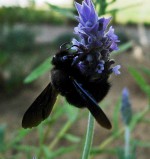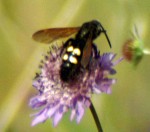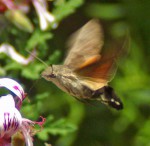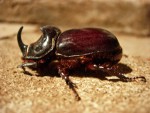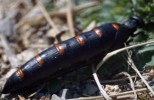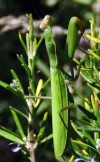The term ‘Garden Birds’ doesn’t have the same connotation here in the South of Spain as it does in Great Britain; there is no culture of deliberately attracting birds to your garden with seed or peanuts to simply watch them and enjoy their presence, so for that reason I should probably refer to them as garden visitors. It was interesting to discover that the birds that have adapted to the human invasion of their rightful habitat and frequent our gardens here, are pretty much from the same species as those that I saw in England and particularly, Wales.
There are certain similarities in the habitats of there and here; the semi-rural setting, the proximity of woodland and leafy gardens. The biggest difference of course is the climate, which allows birds here to continue to forage for seeds, berries and as the majority of trees are evergreen, to an extent insects and spiders throughout the milder winter months.
YEAR-ROUND breeding RESIDENTS OF THE LOCALITY
Those birds present all year round are mainly the typical woodland edge songbird species; Wren, Robin, Blackbird, Blue Tit, Great Tit, Chaffinch, Greenfinch and Blackcap that are spring migrants to the UK and tiny Serin that are not resident in the UK. I can also add to that list Goldfinch that are very adaptable and seen in other habitats too, likewise Sardinian Warbler, more common in habitats with plenty of shrubby, scrub-type vegetation, but some have adapted to foraging around gardens with plenty of shrubs.
There are two species that are very commonly seen in our gardens that I had previously only known as real woodland birds; Jays, which I used to see occasionally in the winter in my garden in Wales when seeking food, are very visible here and hard to miss as they are noisy too. I love to see them and it never ceases to amaze me seeing them perched up in a palm tree as though it were the most normal thing in the world. The other species is the Short-toed Treecreeper, which is very similar to the ‘regular’ Treecreeper with slight variations to colouration. I see them regularly in most months of the year and they have nested high up in our palm trees at least twice.
The list also includes those birds that have historically adapted to living alongside people, House Sparrows, which are fairly numerous but which are noticeably warier of us; Collared Doves which are numerous in the vicinity and that have nested in our big cypress tree and Spotless Starlings that replace the common Starling here.
Occasional visitors are Great-Spotted Woodpecker, Sparrowhawk and a Kestrel that often patrols the area sometimes perching up in one of the palm trees.
Resident in the locality, but not numerous are Wood Pigeon – one particular individual can be spotted regularly in the mornings perched in the dead eucalyptus tree I can see from the house.
Last autumn I had perhaps the most unexpected visitor, a young Kingfisher that popped in for a few minutes every day for a couple of weeks to inspect our pool for tit-bits.
There are some species missing from my UK garden list; Dunnock, Bullfinch and Song Thrush are not resident this far south, although I may get a glimpse of the latter during the spring migration period when they are on their way back to their breeding areas. There are no Magpies, Carrion Crows or Rooks. Jackdaws are resident in the locality, but in much smaller numbers than in Wales and tend to behave as the colonial wild birds they rightfully are, nesting in craggy rocky areas and old quarries etc. Coal Tits are resident in the region but are more tied to the higher-altitude woodlands where there are plentiful pine trees. Similarly, Nuthatch and Long-tailed Tit are absent from this immediate area, although often seen in larger woodland areas.
WINTER RESIDENTS
From October to March we enjoy the company of Black Redstart, Meadow Pipit and Pied ( White) Wagtails, and visits from Grey Wagtails.
PASSAGE MIGRANTS
During the spring migration we may well see Song Thrush, almost always Pied Flycatcher and Hoopoe and just once so far we were briefly visited by a beautiful male Redstart.
SUMMER BREEDING RESIDENTS
House Martins, Barn Swallows and Swifts all return to the locality in the early spring to breed; the House Martins and Swallows usually begin to return in February, Swifts a little later. We have some very charismatic summer neighbours too; Nightingales return sometime from the end of March to the beginning of April, announcing their presence with their wonderful vocal performances, and leaving once breeding is complete around the end of June. Spotted Flycatchers arrive later, maybe during the latter days of April or early-mid May, then may be around until August or even September.


